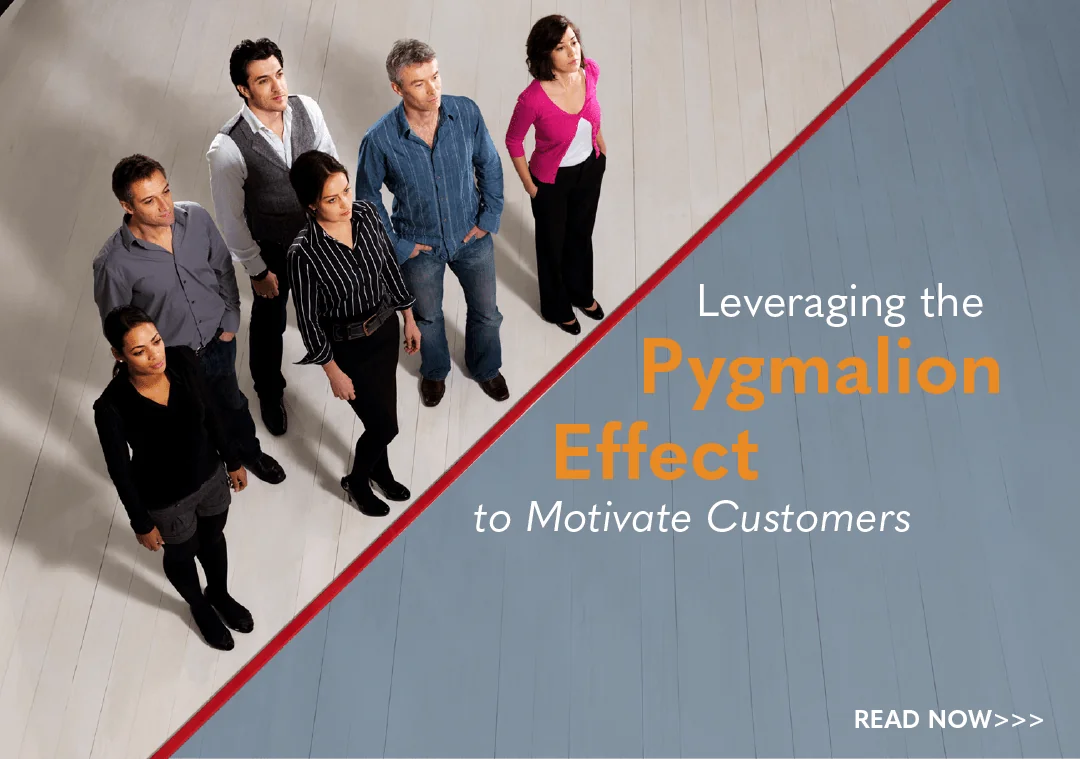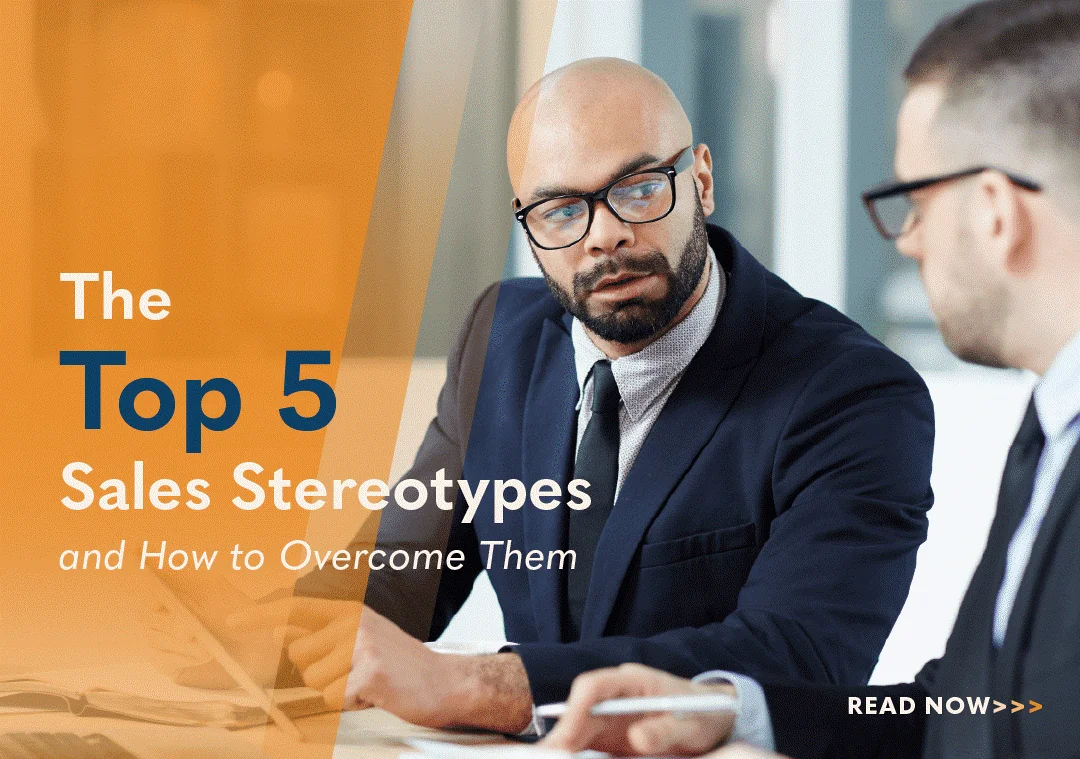Leveraging the Pygmalion Effect to Motivate Customers

In B2B sales, motivation often drives engagement, satisfaction, and, ultimately, success. One powerful psychological phenomenon business can leverage is the Pygmalion Effect. Originating in Greek mythology, today, it’s popular in education, social science, and business. The basic idea suggests higher expectations lead to improved performance and achievement.
Our blog Leveraging the Pygmalion Effect to Transform Sales Teams discussed how this concept can motivate and inspire sellers. But it is also critical to the customer’s experience. Specifically, in how a salesperson’s expectations can boost confidence and motivation. Salesforce research offers insights. They note 71% of B2B buyers say most sales interactions feel transactional. In addition:
- 88% say the experience provided is as important as products/services.
- 89% of buyers are more likely to buy from salespeople who understand their mission and goals.
- 87% expect sales reps to act as trusted advisors.
From this, it’s clear buyers expect and value a positive experience. And Gartner research shows the importance of buyer confidence. They note B2B buyers who are confident about their purchase decision are 3.6x more likely to complete high-quality deals. This makes it essential sellers understand the Pygmalion’s Effect’s potential to boost customer experience and confidence.
Understanding the Pygmalion Effect
The Pygmalion Effect is a self-fulfilling prophecy. It refers to how an individual’s’ performance and behavior conform to others’ expectations. It was first coined by psychologist Robert Rosenthal and educator Lenore Jacobson. Their 1968 book Pygmalion in the Classroom applied the concept to education.
However, it is also essential in business, particularly sales. For example, when B2B customers believe in a seller or product, their belief can inspire success. Of course, solutions must work and provide value. But sellers inspire buyers to act and invest. Without this, solutions are neither effective nor valuable.
The Pygmalion Effect in Sales and Customer Relationships
In B2B sales, the Pygmalion Effect can motivate and empower customers to achieve their goals. This is accomplished by setting high expectations, demonstrating confidence, and providing support and encouragement. Through this, sellers inspire customers to strive for excellence and surpass their own expectations.
For example, The Pygmalion Effect can influence various aspects of the B2B customer journey, including:
- Product adoption and utilization
- Customer satisfaction and loyalty
- Long-term relationship building
A seller’s high expectations encourage customers to embrace products or services. Think how you feel when an auto mechanic solves a persistent, intermittent problem that stumped three other mechanics. All they have to say is, “Saw this once on a 2014 model. New sensor did the trick.” At this point, buyers are all in on a new sensor.
Of course, the sensor must work. But the mechanic diagnosed the problem and offered a solution specific to that problem. Their expertise, experience, and confidence motivated the customer. In this, mechanics and sellers gain customers for life.
However, more than just driving the individual transaction, top sellers maximize its value and impact. For example, personalized content can augment and support solutions. This helps buyers get the most from their purchases. Further, it boosts their post-investment confidence and expectation, leading to loyalty and advocacy.
Through this, sellers build long-term partnerships. These are based on mutual trust, respect, and shared success. Of course, products and services must be worth a buyer’s investment. However, this starts with sellers who empower buyers. Confidence and success build trust. And according to LinkedIn, 84% of B2B buyers cite trust as the most critical factor in relationships.
Leveraging the Pygmalion Effect to Motivate Buyers
The Pygmalion Effect can motivate B2B customers to believe, trust, and, most of all, act. To achieve this, sellers can implement a variety of strategies throughout the customer journey. For example:
- Set high expectations
- Outline specific, actionable, and achievable goals
- Provide positive feedback and encouragement
- Offer support and resources
- Foster collaborative partnerships
- Celebrate achievements and milestones
- Continuously raise the bar
Sellers should communicate clear and ambitious goals and objectives. These should emphasize the potential for innovation and growth. Sellers do not merely fix a problem. You’re building a framework for sustained success.
Imagine telling buyers, “This solution will reduce redundancies and increase collaboration. It will also raise production 8% in the first quarter. And it will boost yearly revenue 10-12%.” The goal is ambitious, but the plan is specific, actionable, and achievable.
In addition, sellers must follow up and inspire continued action. After all, buyers are taking a leap of faith. Of course, it’s a well-thought-out, debated, and duly considered leap. But it’s still a leap. Therefore, regular feedback and praise are critical to maintaining their confidence and belief.
In this, sellers should highlight successful outcomes and best practices. Typically, this includes case studies and testimonials. These inspire confidence and reinforce the customer’s belief in themselves. After all, if similar buyers achieved success, they can too. Note, this is customer centric. Sellers should not highlight what they are doing or have done. Instead, they should emphasize what successful collaborations can achieve.
Remember, too, in the Pygmalion Effect, customer experience is key. Sellers appreciate the buyer’s trust, belief, and investment. But how did these choices make the buyer feel? How did it enhance their experience? Remember, before buyers can feel good about an outcome, they must feel inspired by the process.
Therefore, sellers should provide customers with the tools, resources, and guidance they need to succeed. This includes training materials, implementation support, and expert advice. To generate confidence, don’t wait until there’s a problem to enlist support staff. Introduce them early in the process. Ensure the contact has a name, face, and phone number/email.
In addition, buyers should see you as a strategic partner rather than a transactional supplier. As such, you are fully invested in their success. This starts with open communication, collaboration, and knowledge sharing. If you have an idea, tip, or insight, run it by the customer. Rather than buyers and sellers, with diverse outcomes, you are partners in innovation and mutual growth.
Recognize and celebrate achievements and milestones. Acknowledge their success and seek testimonials. Satisfied customers are typically eager to share, and their participation is key to highlighting your collaborative effects. Social media is a great way to share a client’s success as well as through your sellers directly.
In research cited by HubSpot, 91% of customers say they would give referrals. However, only 11% of sellers ask. In addition, 81% of customers are comfortable making referrals after a positive experience. Most importantly, 65% of a company’s new business is from referrals.
Encourage buyers to strive for improvement and excellence. When possible, set new goals and challenges to maintain momentum. Provide opportunities for ongoing learning, development, and innovation. Your goal is to keep customers engaged and motivated over the long term.
Overcoming Challenges and Pitfalls
Leveraging the Pygmalion Effect can yield significant benefits in motivating B2B customers. However, sales organizations must be mindful of potential challenges and pitfalls. These include:
- Managing expectations
- Maintaining consistency and authenticity
- Adapting to individual needs and preferences
Sellers should avoid setting unrealistic or unachievable expectations. This can lead to disappointment, dissatisfaction, and disengagement. Remember, the goal of the Pygmalion Effect is to motivate and inspire. Strike a balance between challenging customers to aim high and providing realistic support to help them succeed.
Further, ensure all actions and communication align with their expectations. This includes maintaining consistency, transparency, and authenticity in all interactions. Whether in email, on the phone/videoconference, or in person, build the relationship. However, always note your tone. You’re a partner in their success, not necessarily their biggest cheerleader.
Therefore, never overpromise or exaggerate claims about yourself or your solutions. This is salesy and disingenuous. It takes advantage of a buyer’s need and trust, which can kill your credibility. And informed buyers will see right through. While the Pygmalion Effect can motivate, you not only want buyers to believe. You want them to succeed.
The same holds for inspiring customers. Sellers must remember buyers have unique goals, challenges, and preferences. What works for one may not work for another. Therefore, tailor your approach to what will motivate and support each specific customer.
Take the time to understand each customer’s specific needs and circumstances. Through this, you can adapt strategies and resources to maximize effectiveness.
Conclusion
The Pygmalion Effect offers a powerful framework for motivating B2B customers to achieve success. Its emphasis on high expectations, positive reinforcement, and supportive relationships can inspire confidence. This drives engagement and cultivates long-term loyalty.
Through this, sellers can create a personalized customer experience that resonates with the buyer’s goals and aspirations. By embracing the Pygmalion Effect’s potential, sellers can unlock opportunities for mutual growth, innovation, and success. We hope this helps your sales team understand and leverage the Pygmalion Effect to motivate customers.

- Account Planning (11)
- Awards (49)
- Client Testimonial (37)
- Personal Branding (19)
- Podcast (11)
- Research (70)
- Sales Career Development (87)
- Sales Coaching (156)
- Sales Consulting (137)
- Sales Culture (170)
- Sales Enablement (354)
- Sales Leadership (110)
- Sales Management (248)
- Sales Negotiation (16)
- Sales Prospecting (124)
- Sales Role-Playing (18)
- Sales Training (234)
- Selling Strategies (263)
- Soft Skills (70)
- Talent Management (94)
- Trusted Advisor (27)
- Virtual Selling (49)
- Webinar (9)


























